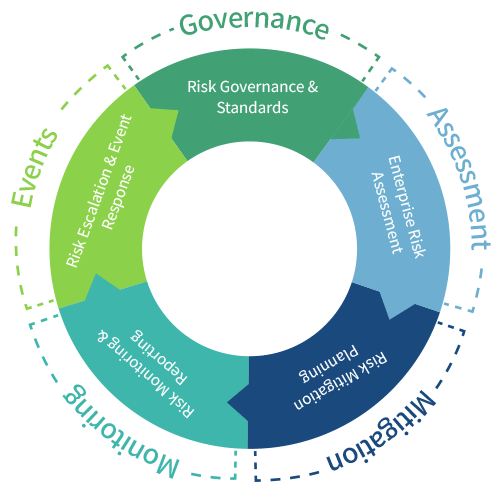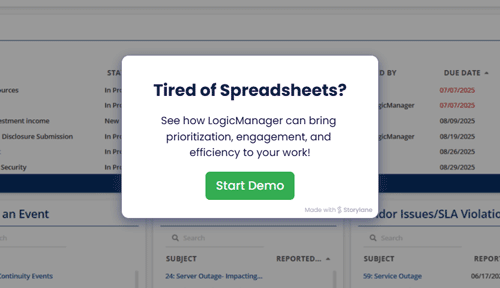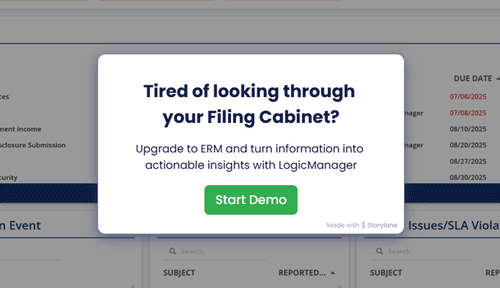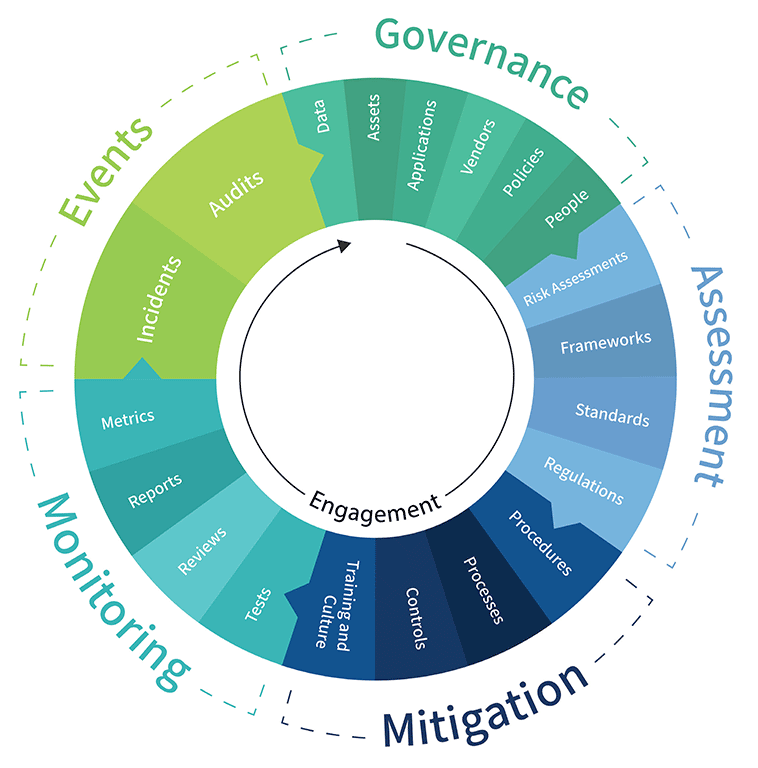Enterprise Risk Management Program
Performance is the result of effective risk management

For risk teams, the challenge isn’t a lack of effort—it’s a lack of alignment. Too often, assessments live in spreadsheets, reporting is reactive, and risk activities feel disconnected from strategy. This fragmentation leads to blind spots, duplicated work, and pressure from leadership to provide clear, defensible answers that current processes can’t easily deliver.
LogicManager’s Enterprise Risk Management (ERM) Program changes that dynamic. It gives risk professionals the structure to formalize oversight, apply consistent standards, and engage the right stakeholders at the right time. With standardized assessments, prebuilt content, and automated workflows, you can identify high-impact risks with confidence and ensure accountability across business units.
By centralizing data in a single connected platform, LogicManager helps you bridge silos and provide real-time insights that translate into leadership-ready intelligence. The result: a program that not only supports compliance but also fulfills your mandate to prevent fraud, waste, and negligence—while demonstrating the strategic value of risk management through improved performance, alignment, and resilience.
Where Are You in Your Risk Journey?
No matter where you're starting from, we meet you there—and take you further. Choose the path that sounds most like you and watch how LogicManager transforms your approach to security and governance.
You're manually updating rows and fighting fires with every audit. Watch how LogicManager helps you replace chaos with clarity—and get back hours in your week.
You're logging controls and assessments into a passive system with no real follow-through. See how LogicManager turns your governance into performance.
You're manually updating rows and fighting fires with every audit. Watch how LogicManager helps you replace chaos with clarity—and get back hours in your week.

Engaging Teams, Roles and Responsibilities
Enterprise risk management requires input and action across the organization—from the boardroom to front-line operations—because everyone's role includes risk management.
With ERM, you are setting the standards that guide how risks are identified, assessed, and addressed at every level. That's why LogicManager is built for unlimited users, with role-based access controls that foster engagement while preserving clear lines of responsibility. Risk Ripple Intelligence ensures the right people see the right information at the right time, empowering timely action without unnecessary noise.
Board Risk Committees, Executive Management, Business Unit Heads, Operational Managers, Chief Risk Officers, Department Risk Coordinators, and Audit leaders can all work within a single system. By giving stakeholders direct access to only what they need, LogicManager reduces friction, bridges silos, and ensures seamless coordination across departments.
Your Roadmap to Enterprise Risk Management Success
Turning Activities Into Actionable Intelligence
ERM isn't just about identifying risks—it's about managing them to drive strategic performance. LogicManager transforms your risk activities into actionable intelligence with real-time dashboards, customizable reports, and dynamic Insight Workbenches.
Our Risk Ripple Intelligence connects the dots across your environment, revealing the relationships between assessments, mitigations, controls, incidents, and strategic objectives. When something changes—like a new risk score, failed control, or shifting KPI—you immediately see the downstream impact and can act with confidence.
Whether you're preparing for a board meeting, audit, or executive review, LogicManager equips you with accurate, defensible, and real-time reporting that's tailored to your audience. From high-level summaries to granular evidence, your program is always presentation-ready—with nothing left to chase down.

Request a LogicManager Demo

Discover how LogicManager's Enterprise Risk Management Program empowers you to set the standards for risk governance—making risk a strategic priority that drives accountability, alignment, and measurable results.
Speak with a risk specialist today to centralize oversight, bridge silos, and build a culture of governance that prevents fraud, waste, and negligence before they impact your business.









